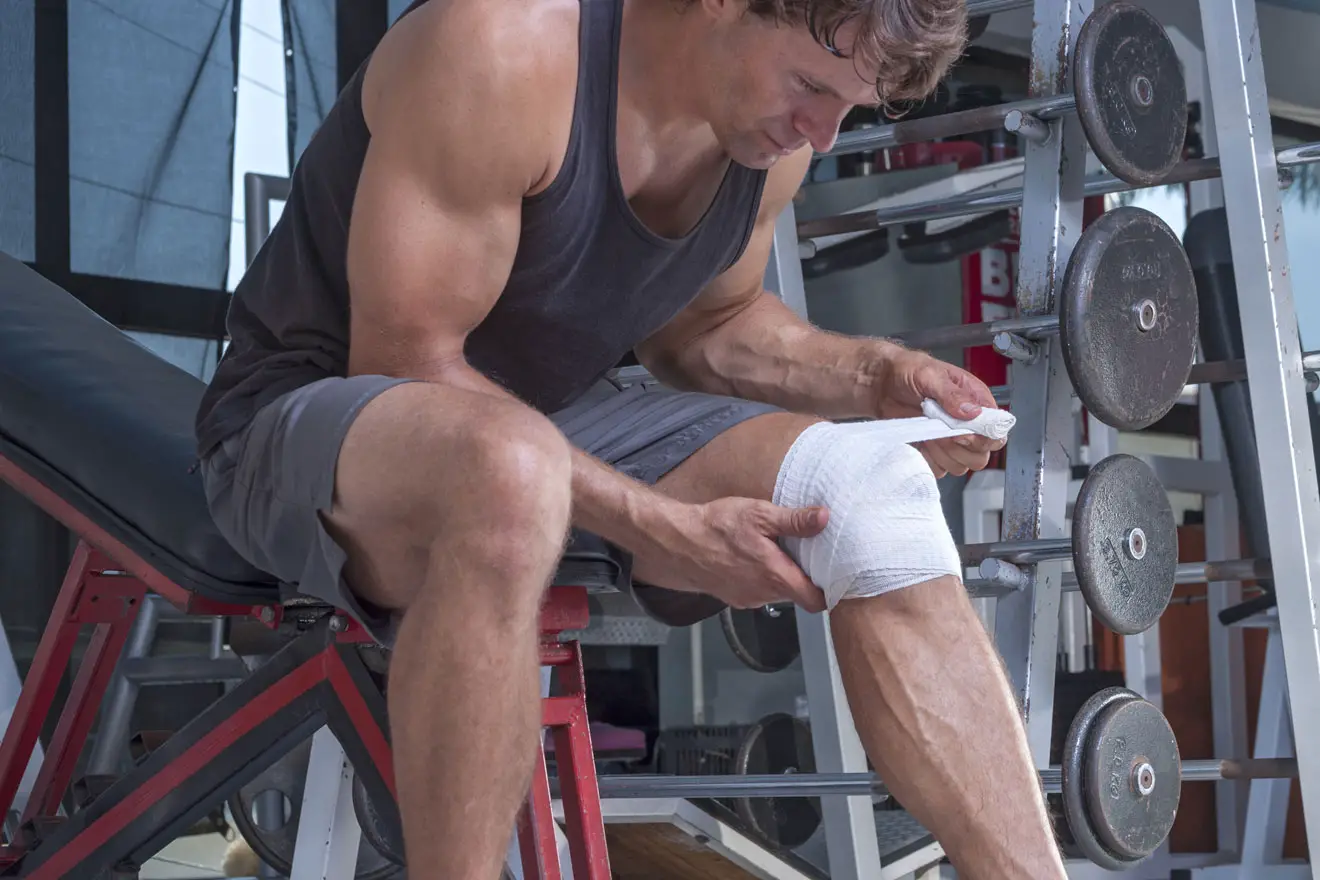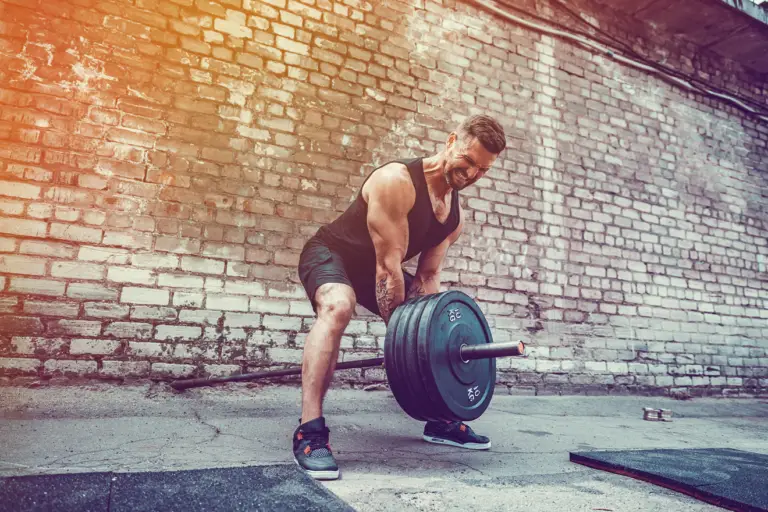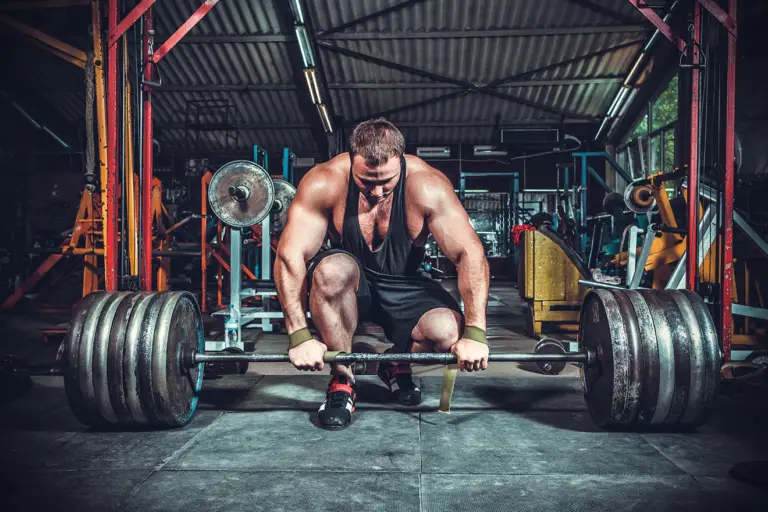Safety always comes first
Training can be dangerous. Your main focus when working out should not be to develop your muscles but rather to stay safe and injury free. If you hurt yourself, you could take yourself out of the gym for months, during which time you will lose a lot, or even all, of your gains. You could even hurt yourself permanently. Although serious injuries are rare, they are a genuine threat, so it’s important to keep gym safety in mind. Worse still, if you do not follow gym safety guidelines, you could hurt someone else.
Below I have provided a list of tips that will help you to stay safe in the gym. Although they are quite simple and straightforward, you’ll be surprised at how often even experienced gym-goers tend to ignore them, thus risking their safety and the safety of other gym-goers. Try not to make the same mistake.
Gym safety tips
Wear appropriate clothing
Keep clothes tucked in and shoelaces tied. Don’t wear overly loose or tight clothing. Loose clothing can get snagged, and tight clothing can restrict your movement, which can hinder your balance, as well as prevent you from achieving a full range of motion.
Warm up before you train
Warming up will prepare your mind and body for exercise, which can prevent a variety of possible injuries. Warming up is covered in detail in How to warm up.
Lock your plates
Locking your weight plates every time can be tedious, but it’s far safer than is training with loose plates. If you break form or lose balance, the loose plates can obviously fall off — hopefully, not onto someone else.
Check barbell sleeves
A loaded Olympic barbell includes the barbell, the thick sleeves that are screwed on to the bar at each end, the weight plates that are slotted on to the sleeves, and the collars that keep the plates from falling off (Figure 1). Note that the sleeves themselves can become loose and fall off, together with the plates and collars. Therefore, always check that the nuts of the sleeves are secure before using a barbell.
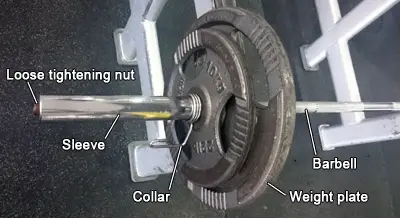
Figure 1. Barbell setup, including the barbell, weight plates, sleeve, and collar. The nut that holds the sleeve has become loose, in which case the sleeve, together with the plates and collar, can fall off.
Dismount heavy bars carefully
On at least three occasions, I have loaded a very heavy barbell, snatched it off the rack too aggressively, and nearly lost balance. Once, the bar nearly came crashing down onto my legs while lying on a bench! With that in mind, dismount heavy barbells slowly and carefully.
Use a belt when you lift very heavy weights
A high-quality weightlifting belt may help to prevent lower back injuries, as well as provide support for your core muscles, when you lift very heavy weights. However, use the belt only when you lift very heavy weights. Otherwise, you will grow dependent on it and compromise the strengthening of your lower back and core muscles.
Practice proper form
Proper form doesn’t just ensure that you get maximum results but also reduces the risk of injury. Always have complete control over the weight.
Follow the correct breathing pattern
When you perform heavy compound exercises, many of your muscles get involved, all of which require oxygen. They leach the oxygen out of your bloodstream, momentarily leaving little oxygen for your brain. If you hold your breath or fail to breathe adequately while exerting yourself, the lack of oxygen going to your brain can cause you to faint. Therefore, be mindful of your breathing pattern. As a general rule, you should exhale while performing the concentric phase of a rep and inhale while performing the eccentric phase. For a little more on breathing, see Weight training guidelines and principles.
Don’t go too heavy
It can be tempting for guys to show off in front of their gym buddies and use weights that are overly heavy — especially if their buddies lift heavy weights. Do not be one of these individuals. All you will be doing is compromising proper form; placing unnecessary stress on your bones, joints, ligaments, and tendons; and risking an injury.
Train with a partner or spotter
When you lift heavy weights, always get someone to spot you. A spotter is someone who guides and guards you while you’re lifting. Ideally, your spotter should be someone who could actually stop a barbell from hurting you. If you don’t have a training partner, ask a gym-goer to spot you. Most gym-goers have a fraternal attitude, and spotting each other is normal. Even if your spotter can’t stop the accident from happening, he or she can still call for help if an accident occurs.
Use a power rack
In the absence of a spotter, use a power rack (Figure 2). A power rack will allow you to train alone safely. It is basically a metal frame with adjustable safety bars that can prevent heavy barbells from flattening your person. For example, if you want to bench press in a power rack, just place the bench inside and set the safety bars above your chest. You will then not have to worry about the bar flattening your chest if you can’t press it up. It’s the same for barbell squats. Just position the safety bars a little below the height to which you want to squat. If you fail to complete a squat, just fall forward and crawl out.
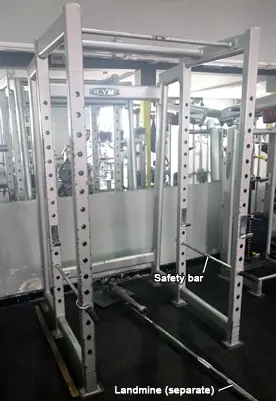
Figure 2. Power rack. The height of the horizontal safety bars can be adjusted, and a bench can be placed inside the power rack.
Rerack your plates
Try not to be one of the inconsiderate individuals who leaves plates and dumbbells lying all over the floor. When you’ve finished with your equipment, place it back in its proper place. This not only promotes the safety of gym-goers but also keeps the gym tidy and makes equipment easier to find.
Be aware of your surroundings
Not everyone in the gym is as mindful as you are. Keep your eyes open for risks posed by other gym-goers, many of whom do not follow even the most basic gym safety guidelines.
Learn about your body and your exercises
Knowledge and understanding of the biomechanics of your body and the movement patterns of the exercises can help you to avoid injuries, as well as practice the best possible form and get the most out of your workouts. The more you know about your body and the exercises that you perform, the less likely you will be to hurt yourself. For exercise guidance, see the Exercise Database.
Avoid dangerous exercises
Steer clear of exercises that are known to be dangerous, such as the:
- Dumbbell fly
- Upright row
- Behind-the-neck lat pull-down (or behind-the-neck pull-up)
- Behind-the-neck press
The first two exercises (the dumbbell fly and upright row) are only dangerous if you do them incorrectly, whereas the remaining behind-the-neck exercises should be avoided at all costs.

